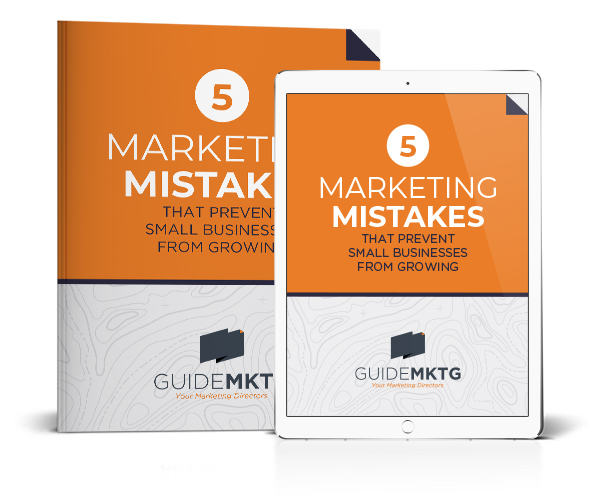90% of the time, when business owners and marketing directors are asked to describe their target audience, they rattle off a list of demographic information. Although it is good to know your target demographic, that is only half of the story. The key to hitting a home run with your marketing campaigns is defining both the demographics and psychographics of customers.
What is the difference between demographics and psychographics?
Demographics are easily measurable, statistical data that describe your target audience, like age, gender, annual income, social class, educational attainment, location, etc.
Psychographics go beyond the numbers to look at the interests, attitudes, personal preferences, personality traits, pain points and motivators that drive that particular population’s behavior and buying decisions.
Essentially, demographic data provides you with basic information while psychographic data gives you deeper insights into your customers’ wants and needs. Demographic factors might tell you how much an ideal client would be willing to spend but psychographic information tells you why they buy.
According to the Harvard Business Review, psychographics help you target a more specific group of people who are likely to make the same purchase decisions.
For example, let’s say you provide house cleaning services. You may know that your target demographic group is homeowners between the ages of 25-34. Although that is an important piece of the puzzle, understanding their psychographic profile, like their love for fitness and a healthy lifestyle, can help you take your marketing strategy up a notch.
If you can show them how house cleaning services will give them more time for those weekend hikes and evening trips to the gym, they will be much more likely to sign up than if you focus on something general, like how great it feels to have a clean home.
Both benefits are real. Both benefits matter. However, having more time matters more to your target market. The more deeply they feel the pain, the more motivated they will be to find a solution.
By having a detailed picture that includes both the demographic and psychographic components of your target customer, you can create more focused, personalized marketing campaigns that resonate with your ideal client on a deeper level.
How do you figure out the demographics and psychographics of customers?
So, how do you get the information you need? You do a little bit of market research and take a deep dive into the data.
If you already have an audience, sending out a basic survey is a great place to start. You could put together a multi-question customer survey that you send out to your email list or drip out one question at a time on social media.
When people stop by your office for an in-person service, you could ask them to fill out a quick questionnaire before their appointment. Or you could put together a focus group of target customers in exchange for a discount code or free trial of your offering.
Even if you are just getting started and don’t have anyone to survey just yet, you can still get some great information with a little internet investigation.
Go to Answer The Public to see all the questions people search related to your business offering. You can also search related social media posts and groups to read questions and comments related to what you offer. This will give you insight into what your target audience is really looking for and how they talk about their struggles.
Last but not least, you can survey your competition. Look at the leaders in your industry. What pain points do they remind their ideal clients of in their marketing messages? What benefits do they play up? How did their previous advertising campaigns perform? How are their website analytics? Which pages get the most traffic? Gather as much data as you can.
You aren’t going to take this information and copy it. You are going to use it to inform your customer profile and marketing communications. You will likely have to tweak and change your buyer persona profile over time, as you get a better idea of your ideal customer and the specific needs that your business meets.
The goal isn’t to get it perfect the first time. It is to use demographic and psychographic information to tell a more complete story of who your consumers are and what they want.
How can you use demographics and psychographics in marketing?
Once you have the consumer information you need, it’s time to use it to craft effective marketing strategies that get results.
By understanding your customers’ demographics and psychographics, you can create custom campaigns that speak to what they really want.
Let’s go back to the example of house cleaning services for fitness-loving 30-year-olds. This potential customer is not spending time looking for a cleaning service. They are too busy trying to figure out how to carve enough time out of their crazy schedule for their daily trip to the gym.
If you show them how your house cleaning business can solve their lack of time problem and give them a clean house, your phone will be ringing off the hook. You’ve positioned your offering to give them what they really want: extra time.
Customers aren’t usually searching for a product or a service. They are looking for a solution to a problem. If your marketing campaign shows how your business solves a very real problem, one that is keeping your potential customers up at night, they will be much more likely to buy what you have to offer.
Understanding both the demographic and psychographic characteristics of your customers is the key to creating successful marketing campaigns. By identifying their interests, values, and preferences, you can create personalized campaigns that deeply resonate with your customers. The more they feel seen and understood, the more likely they are to decide to work with your company.
If you are struggling to get to the bottom of your ideal clients’ demographics and psychographic profiles, schedule a call with Guide MKTG today. The first step in our process is to dive deep into demographics and psychographics so we can create messaging that resonates with your target audience and gets you the results you want.





